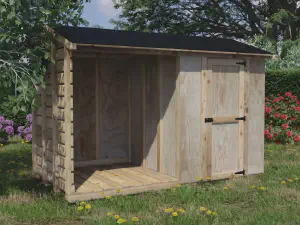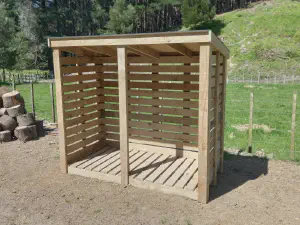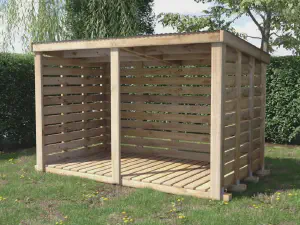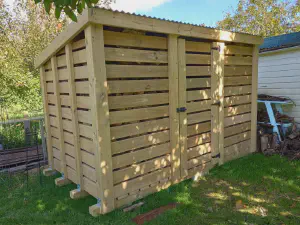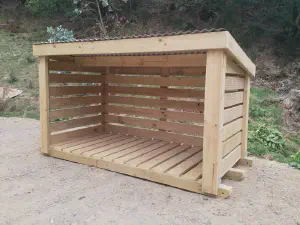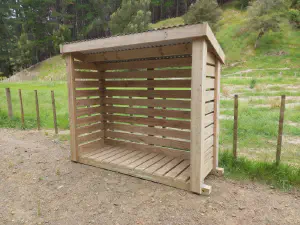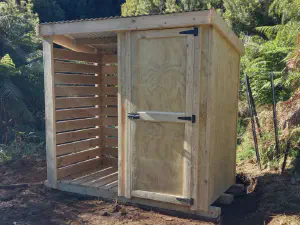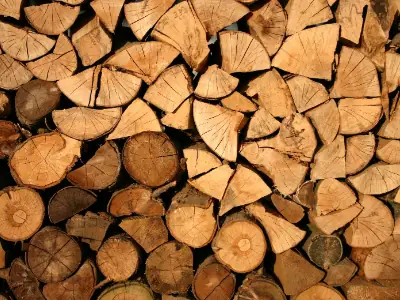
drying firewood
Chopping wood is one thing; drying it to perfection is another. It’s a task that requires patience, know-how, and a keen eye for detail. A roaring fire begins with logs that are dried just right, and that means understanding more than just wood—it means knowing the process.
In this guide, we’ll explore 9 essential tips that can turn even the dampest log into a roaring blaze. From the importance of removing bark to the wisdom of using a moisture meter, we’ll guide you through the steps to dry firewood like an expert.
Let’s get into it.
1. Start Early
The process of drying firewood is not something that can be rushed, and starting early is essential. By chopping and stacking your wood in spring or early summer, you take advantage of the warmer weather and longer days. This natural exposure to sun and wind will reduce the moisture content in your wood, making it ideal for burning by the time winter rolls around.
Think of it as nature’s oven slowly baking your logs to perfection. In this game, the early starter definitely wins, ensuring cozy fires all winter long.
2. Split ’em Up
When it comes to drying firewood, size truly matters, and in this case, smaller is better. By splitting the logs, you create more surface area, which allows for quicker drying. Whole logs can trap moisture inside, creating a breeding ground for rot and mold. But when you split ’em up, the wind and sun can reach more of the wood, drawing out the moisture efficiently.
Think of it like slicing a loaf of bread to toast it faster; split logs will dry out much more quickly than whole ones, leaving you with better firewood in less time.
3. Remove the Bark
In the firewood world, bark is like an unwanted jacket on a warm day—it just holds in the moisture. Stripping it away is more than a mere aesthetic choice; it’s a practical one. Without the bark, the wood dries more efficiently, and that trapped moisture is free to escape.
It’s like unbuttoning that jacket and letting the fresh air in. The result? Logs that are lean, mean, and primed for burning. By removing the bark, you’re taking a critical step toward ensuring your firewood is ready when you are.
4. Sunshine’s Best Friend
Want the secret to quick-drying firewood? Just look up! The sun, that blazing ball of energy in the sky, is a natural dehydrator for your logs. Placing your wood in direct sunlight helps evaporate the moisture, and it’s as simple as finding a bright spot in your yard.
It’s like laying your logs out on a sunbed, only this tan makes them ready for burning. No gadgets, no fuss, just good old-fashioned solar power doing the hard work. When it comes to drying firewood, sunshine really is your best friend.
5. Air it Out
Drying firewood isn’t just a sun-soaked game; the wind plays a vital role too. By stacking the logs with enough space for air to circulate, you’re allowing the breeze to penetrate and wick moisture away.
It’s like nature’s fan system, drying the logs naturally and efficiently. You don’t need to force it; just stack thoughtfully and let the fresh air do its thing. It’s the gentle touch that makes all the difference, turning those soggy logs into perfect fuel for your fire.
6. Off the Ground
When it comes to drying firewood, it’s not just about battling the moisture in the wood; it’s also about keeping new moisture from creeping in. That’s where elevation comes into play. By lifting your logs off the ground and placing them on a platform or rack, you’re effectively blocking ground moisture coming up from below, ensuring that the drying process continues uninterrupted.
Think of it as putting your firewood on a stage, away from the wet ground, where it can dry like a star. It’s a simple but powerful move that leads to perfectly dry logs, ready to light up your fireplace.
7. Cover the Top
Rain might be great for plants, but it’s a sworn enemy of drying firewood. That’s where the “wood umbrella” strategy comes into play. Simply cover the top of your woodpile to shield it from the rain, but leave the sides exposed, allowing them to breathe.
It’s like providing your logs with their own personal shelter, where the top stays dry and the sides enjoy the fresh breeze. This way, you’re keeping the water out without locking the moisture in, ensuring your wood dries properly and stays ready for those chilly nights.
8. Time’s the Trick
Drying firewood is a game of patience, not a sprint to the finish line. Just like Rome wasn’t built in a day, good firewood needs time to reach its prime. It might be tempting to rush the process, but slow and steady wins this race. The moisture trapped within those logs won’t vanish overnight; it requires weeks or even months to properly escape.
Think of it as a slow roast rather than a quick fry. By allowing your wood the time it needs to dry naturally, you’re ensuring a better burn and a more satisfying crackle when it’s finally time to light up the fireplace. Patience isn’t just a virtue here; it’s a necessity.
9. Check it Twice
Trusting your intuition is great, but when it comes to drying firewood, a moisture meter is the reliable friend you need. It doesn’t guesstimate; it tells you the truth. Check those logs not once, but twice, to make sure they’re ready to burn. The meter won’t sugarcoat it; if the moisture’s not right, you’ll know.
It’s like a quality control inspector for your fireplace, making sure every log meets the standard. With this double-check, you can be confident that when you light up, you’ll get the roaring fire you’re aiming for, not a damp disappointment.
Conclusion
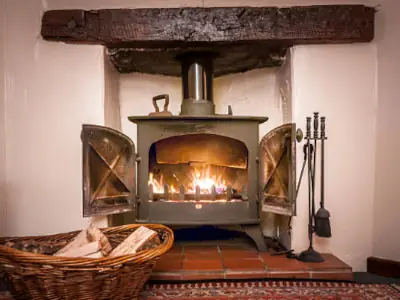
burning dry firewood
So there you have it, 9 essential tips to ensure your woodpile is ready for those cold nights ahead.
Drying firewood is more than leaving logs out to dry; it’s a process that requires careful planning and execution. From removing the bark to checking moisture levels, each step is crucial in achieving the perfect burn.
Now that you’ve got the know-how, grab your tools, and prepare for a winter filled with the comfort of well-prepared firewood.
